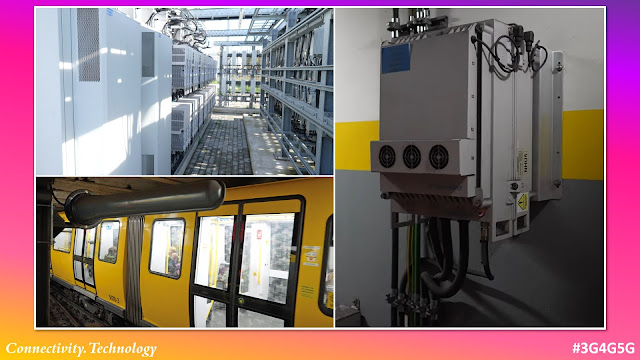Mobile connectivity is becoming a necessity and this is compelling mobile operators to provide coverage in very hard to reach areas within cities. One such example is in subways and metros where connectivity enhances the overall quality of life for commuters, improves safety and efficiency, and supports the growth of smart, connected urban environments. There are several other advantages like emergency communications, being able to communicate with friends/family/colleagues as and when required, and much more that I an not going to expand here.
Some years back we made an explainer on how connectivity is provided in case of metro/subway here. While there were limited examples available then, we have seen a boom in underground connectivity since then.
Recently O2 Telefónica in Germany announced (in German, translated via Google translate):
It was now possible for all passengers of the Berliner Verkehrsbetriebe (BVG) to access high speed connectivity. The Berlin subway, the backbone of Berlin's local transport with well over a million passengers a day, now has a fast and powerful 4G/LTE mobile network from all major mobile providers on all underground routes. This was announced by the BVG and O2 Telefónica as project leaders. This means that not only customers of O2 Telefónica , but also customers of Deutsche Telekom and Vodafone in the Berlin subway benefit from fast mobile communications.
O2 Telefónica has created a completely new mobile communications architecture for the Berlin subway network . Previously, the network technology was distributed across various underground operating rooms along the route network. From now on, four central above-ground data centers - the so-called "BTS Hotels" - offer access to the base stations at any time. This enables the network technicians of the major mobile phone providers to feed in new hardware and software much more quickly . The modern network is being further optimized in order to continuously improve quality in addition to the basic expansion . It also lays the foundation for the 5G expansion. In the first step, the mobile phone providers will set up a powerful 5G supply on the 3.6 gigahertz frequency at Alexanderplatz station.
With nine lines and 175 stations, the capital's subway network, parts of which are more than 100 years old, is one of the oldest and largest in Europe. For the network modernization in the BVG tunnels, the technicians have implemented the most comprehensive indoor mobile communications project in Germany . For the expansion, O 2 Telefónica laid more than 1,000 kilometers of fiber optic cables on the tunnel routes - that corresponds to the distance from Flensburg to Garmisch-Partenkirchen. The telecommunications provider has also laid more than 1,000 kilometers of power and high-frequency cables and installed 360 tunnel antennas, 350 repeaters and 30 base stations
The offer is well received: thanks to the continuous network expansion, the daily data usage of O2 customers on the subway has increased sevenfold to around 35,000 GB since 2019. Thanks to the faster network, people can use their smartphones not only for timetable information, but also at any time during the journey to check social networks such as Instagram or for music and video streaming.
The following video explains this further:
Related Posts:
- Telecoms Infrastructure Blog: Bringing Connectivity to Underground Rail Network
- Connectivity Technology Blog: Gigabit Innovation Track' (GINT) Gets Green Light in Germany
- Telecoms Infrastructure Blog: London Underground Mobile Network Infrastructure
- Connectivity Technology Blog: Future Spectrum Demand for Rail Communications
- The 3G4G Blog: Future Railway Mobile Communication System (FRMCS)
- Connectivity Technology Blog: China Unicom Brings 5G Connectivity to Nanjing Metro
- Connectivity Technology Blog: Paris Metro is now 100% covered with LTE

Comments
Post a Comment